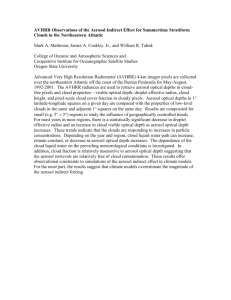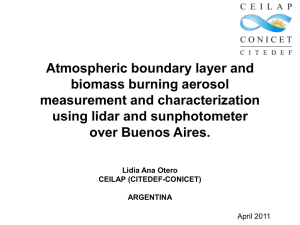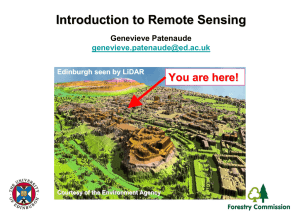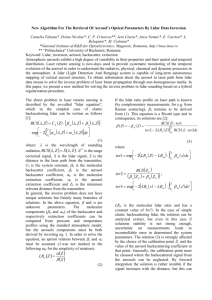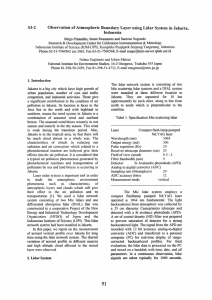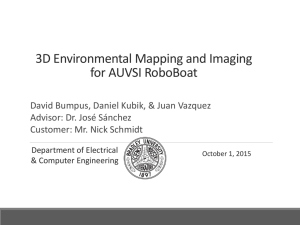Using CPL Data to Derive Optical Properties of Aerosols For the
advertisement
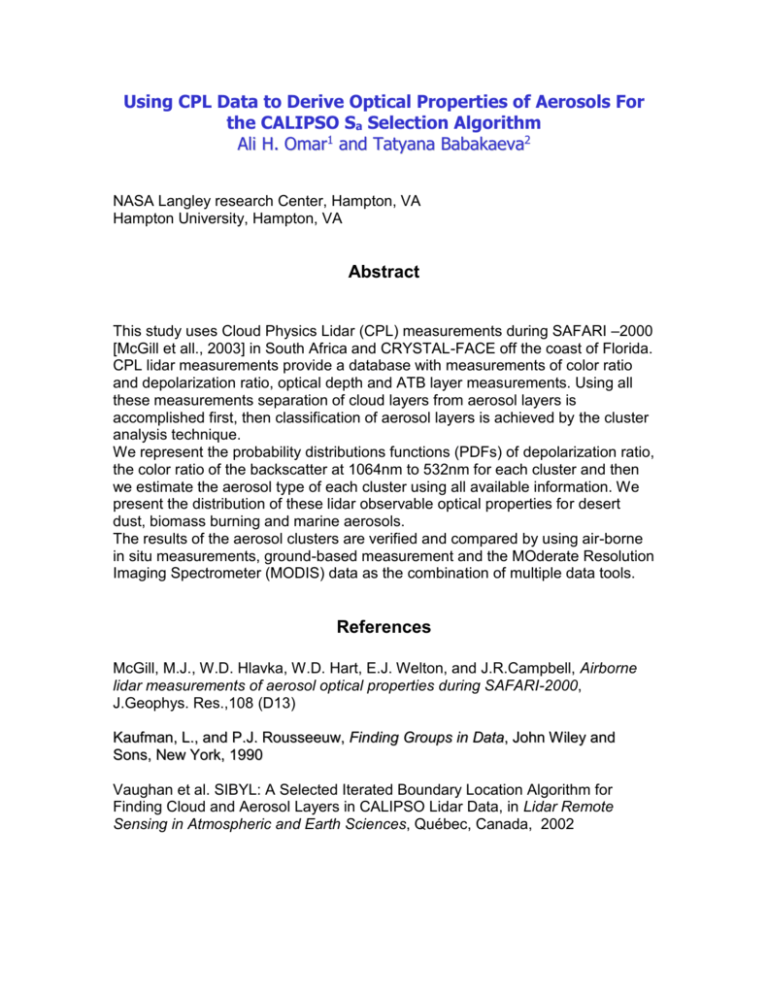
Using CPL Data to Derive Optical Properties of Aerosols For the CALIPSO Sa Selection Algorithm Ali H. Omar1 and Tatyana Babakaeva2 NASA Langley research Center, Hampton, VA Hampton University, Hampton, VA Abstract This study uses Cloud Physics Lidar (CPL) measurements during SAFARI –2000 [McGill et all., 2003] in South Africa and CRYSTAL-FACE off the coast of Florida. CPL lidar measurements provide a database with measurements of color ratio and depolarization ratio, optical depth and ATB layer measurements. Using all these measurements separation of cloud layers from aerosol layers is accomplished first, then classification of aerosol layers is achieved by the cluster analysis technique. We represent the probability distributions functions (PDFs) of depolarization ratio, the color ratio of the backscatter at 1064nm to 532nm for each cluster and then we estimate the aerosol type of each cluster using all available information. We present the distribution of these lidar observable optical properties for desert dust, biomass burning and marine aerosols. The results of the aerosol clusters are verified and compared by using air-borne in situ measurements, ground-based measurement and the MOderate Resolution Imaging Spectrometer (MODIS) data as the combination of multiple data tools. References McGill, M.J., W.D. Hlavka, W.D. Hart, E.J. Welton, and J.R.Campbell, Airborne lidar measurements of aerosol optical properties during SAFARI-2000, J.Geophys. Res.,108 (D13) Kaufman, L., and P.J. Rousseeuw, Finding Groups in Data, John W iley and Sons, New York, 1990 Vaughan et al. SIBYL: A Selected Iterated Boundary Location Algorithm for Finding Cloud and Aerosol Layers in CALIPSO Lidar Data, in Lidar Remote Sensing in Atmospheric and Earth Sciences, Québec, Canada, 2002



